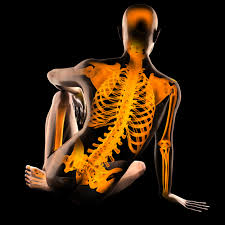
Breaking News
 Government shutdown triggers travel nightmare as controller shortages force ground stops...
Government shutdown triggers travel nightmare as controller shortages force ground stops...
 How a natural PEPTIDE helped me REGENERATE injured tissue
How a natural PEPTIDE helped me REGENERATE injured tissue
 Asteroid Threat Detection and Planetary Defense Can Be Complete and Ready by 2035
Asteroid Threat Detection and Planetary Defense Can Be Complete and Ready by 2035
Top Tech News
 Graphene Dream Becomes a Reality as Miracle Material Enters Production for Better Chips, Batteries
Graphene Dream Becomes a Reality as Miracle Material Enters Production for Better Chips, Batteries
 Virtual Fencing May Allow Thousands More Cattle to Be Ranched on Land Rather Than in Barns
Virtual Fencing May Allow Thousands More Cattle to Be Ranched on Land Rather Than in Barns
 Prominent Personalities Sign Letter Seeking Ban On 'Development Of Superintelligence'
Prominent Personalities Sign Letter Seeking Ban On 'Development Of Superintelligence'
 Why 'Mirror Life' Is Causing Some Genetic Scientists To Freak Out
Why 'Mirror Life' Is Causing Some Genetic Scientists To Freak Out
 Retina e-paper promises screens 'visually indistinguishable from reality'
Retina e-paper promises screens 'visually indistinguishable from reality'
 Scientists baffled as interstellar visitor appears to reverse thrust before vanishing behind the sun
Scientists baffled as interstellar visitor appears to reverse thrust before vanishing behind the sun
 Future of Satellite of Direct to Cellphone
Future of Satellite of Direct to Cellphone
 Amazon goes nuclear with new modular reactor plant
Amazon goes nuclear with new modular reactor plant
 China Is Making 800-Mile EV Batteries. Here's Why America Can't Have Them
China Is Making 800-Mile EV Batteries. Here's Why America Can't Have Them
Stem cells coaxed into regenerating bone while leaving tumors out

With successful animal tests already in the bag, the findings could have a big impact on the treatment of bone defects, and for healing traumatic bone injuries.
Pluripotent stem cells are extremely versatile, with the capability of becoming any type of cell found in the body, a process known as differentiation. In 2012, a Johns Hopkins study saw the development of a technique to regress blood cells into pluripotent stem cells, and over the years we've seen them used to create functional intestinal tissue, grow human retinas, and much more.
Despite past successes in utilizing the versatile stem cells, coaxing them to develop into a particular type of cell is anything but simple. The UC San Diego team describes the process as being akin to following a very complex recipe, with a long list of ingredients and a complex set of steps.

 No Vacation For You!
No Vacation For You! China Innovates: Transforming Sand into Paper
China Innovates: Transforming Sand into Paper

